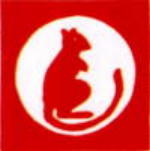Hobby Master HG4005 British Morris Quad Gun Tractor with Limber and 25 Pounder Gun - Gold Beach, D-Day Plus 2, Normandy, 1944 (1:72 Scale)
"Quo fas et gloria ducunt." ("Where Right and Glory Lead.")
- Motto of the Royal Artillery
 The Morris Commercial C8 FAT (Field Artillery Tractor) commonly known as a Quad was an artillery tractor of the British and Commonwealth forces during World War II. It was used to tow medium artillery pieces, such as the 25 pounder gun-howitzer, and the 17 pounder anti-tank gun.
The Morris Commercial C8 FAT (Field Artillery Tractor) commonly known as a Quad was an artillery tractor of the British and Commonwealth forces during World War II. It was used to tow medium artillery pieces, such as the 25 pounder gun-howitzer, and the 17 pounder anti-tank gun.
The original artillery tractor design was by Guy Motors based on a Morris C8 4 x 4 chassis in 1937. As demand was greater than the available production capacity at Guy, Morris took on production followed by other manufacturers later. The Quad had a 4 ton winch to pull it or the gun. Production of 10,000 plus vehicles was mostly by Morris Commercial Cars Ltd, Karrier and General Motors Canada.
The Quad was used by the British and Commonwealth forces during the Second World War and Korean War. Just after the Second World War a number were supplied to the Danish Army.
Pictured here is a 1:72 scale replica of a British Quad Gun Tractor with limber and 25 pounder gun that was deployed to Gold Beach, D-Day Plus 2, Normandy, during 1944.
Sold Out!
Dimensions:
Length: 2-1/2-inches
Width: 1-1/4-inches
Release Date: May 2012
 Historical Account: "The Desert Rats" - According to Field Marshal Lord Carver, himself a former Desert Rat, the 7th Armoured Division's name and emblem were inspired by a pet jerboa kept by a regimental signaller. Seeing the beast, the division's then commander, Major-General "Hobo" Hobart, is said to have remarked, "This little animal should become our emblem. We must learn to live as he does, the hard way, in the desert."
Historical Account: "The Desert Rats" - According to Field Marshal Lord Carver, himself a former Desert Rat, the 7th Armoured Division's name and emblem were inspired by a pet jerboa kept by a regimental signaller. Seeing the beast, the division's then commander, Major-General "Hobo" Hobart, is said to have remarked, "This little animal should become our emblem. We must learn to live as he does, the hard way, in the desert."
And, having trained its men to fight and win battles in the vast Western Desert, the division played a crucial, and decisive, role in the North African campaign. Three times - in 1940, '41 and '42 - German and Italian forces attempted to take control of the North African coast. Three times they were driven back, by the UK's Eighth Army, the heaviest fighting taking place near Tobruk in Libya.
The German commander, Lieutenant-General Erwin Rommel - the charismatic and respected 'Desert Fox' - promised his men that, if they took Tobruk, he would build a monument to commemorate the victory. If they lost, though, the
Afrika Korps would bury its dead there. The German cemeteries still to be seen on the Libyan coastline bear mute testament to Rommel's failure and the Desert Rats' hard-won success.
But it was victory at El Alamein in October 1942 - which came after one of the biggest artillery barrages of the war - that sealed Rommel's fate in North Africa and brought the Desert Rats, the Eighth Army and its commander, General Bernard Montgomery, eternal fame.
Not surprisingly, the Desert Rats' war did not end there. They fought in some of the war's bloodiest battles; at Salerno, in Normandy. and crossing the Rhine into Germany. And they ended the war by marching in the victory parade at the very heart of the Third Reich, Berlin itself.









